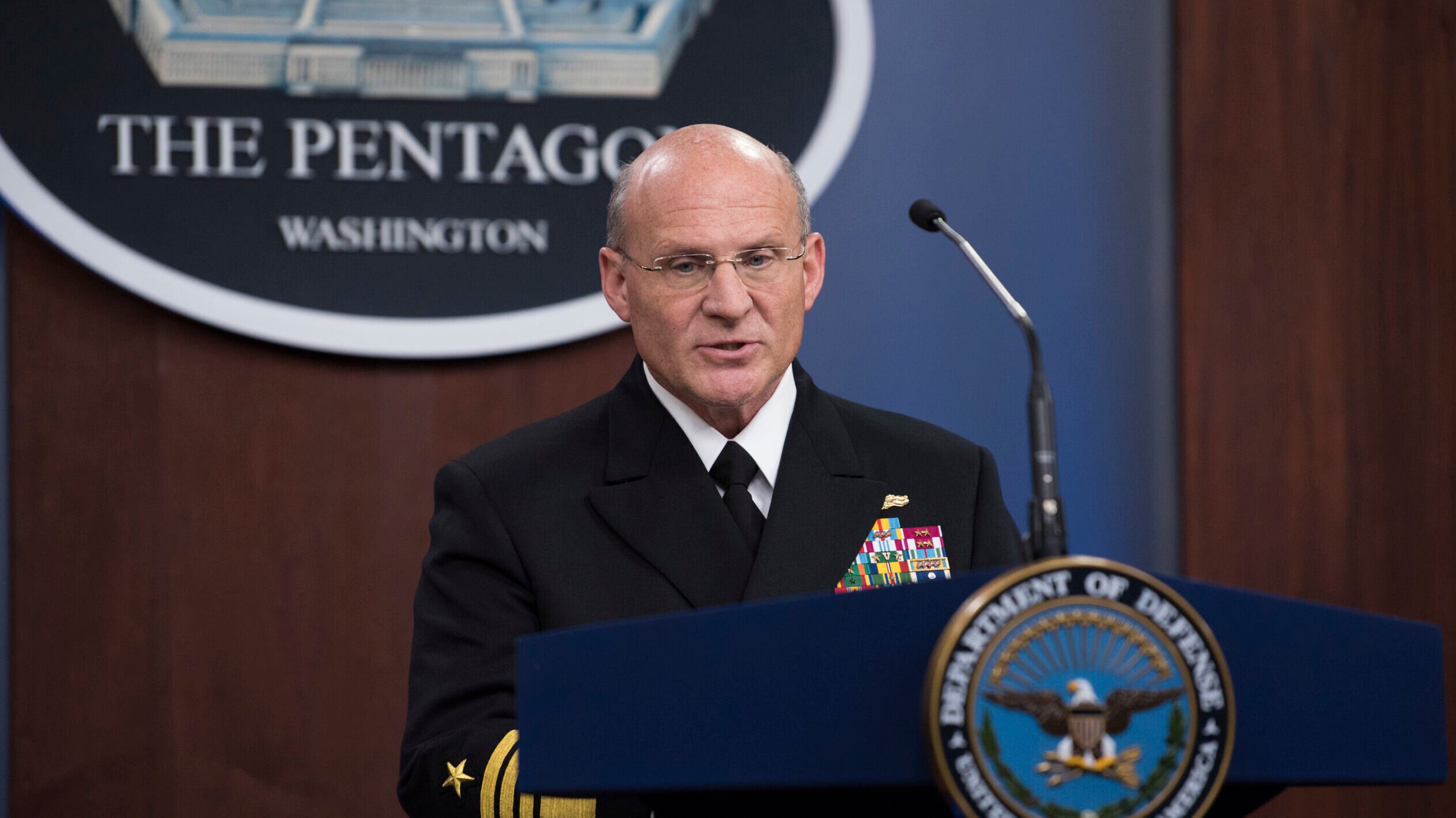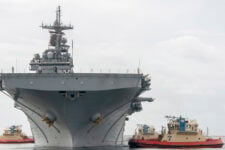
Chief of Naval Operations Adm. Michael M. Gilday speaks at a Pentagon press briefing, Washington, D.C., April 2, 2020. (DoD photo by Lisa Ferdinando)
WASHINGTON: With the Navy’s fiscal 2023 budget request looking to cut the overall number of ships, the service’s top uniformed officer is making the case that such cuts are needed to ensure weapons stockpiles don’t fall short in a conflict.
Speaking before the House Armed Services Committee today, a body historically skeptical of attempts to trim ship numbers, Chief of Naval Operations Adm. Michael Gilday stressed that the decision to decommission 24 hulls was made strategically, with real-world consequences in mind.
If the service isn’t allowed to decommission those ships, it means the Navy will “pay for that in terms of people, we’re going to pay for it with less ammunition and magazines, fewer spare parts and storerooms,” Gilday said. “We’re going to pay for it with reduced maintenance, reduced flying hours, reduced steaming days — everything that’ll yield you a ready force today.”
The Navy’s top officer added that money saved on decommissioning ships will go directly into the kind of munitions that will be vital in any conflict between the US and China.
“So with respect to readiness, we’re trying to maximize the domestic production lines for all high-end missiles, LRASM, JASM-ER, Maritime Strike Tomahawk, SM6. So that the ships that we do send to sea actually have systems that matter from both a deterrence and from a fight —”
At that point Gilday was cut off by HASC chair Rep. Adam Smith, D-Wash., who summed up the argument like this: “Rather than spending money on ships that aren’t capable and don’t perform, you would like to spend it so the ships we do have, actually have missiles that they can use, which seems to make sense to me.”
The FY23 request seeks to retire five cruisers, nine Littoral Combat Ships, four dock landing ships, two submarines, two fleet oilers and two expeditionary transfer docks. Early in the hearing, Gilday laid out his reasoning for making those calls.
On the five cruiser retirements, Gilday argued that they have suffered, collectively, “over eight years in delay days out of shipyards, and over a half a billion dollars above budget with respect to the modernization programs.” On top of that, he said, “the older SPY radars can’t see the threat. If they can’t see it, they can’t shoot it down.
“In terms of reliability, three recent cruisers that we’ve deployed, we’ve had to pull them in for repairs overseas with leaks below the waterline, we’ve had to pull them back into their home ports in the United States for leaking fuel tanks,” he continued. “So there have been survivability, reliability and lethality challenges with the cruisers that are near the end of their service life at 35 years. We think that at this point we’re throwing good money after bad.”
As to the decision to retire nine LCS ships, Gilday said the “primary” reason for that move is the failure of the anti-submarine warfare system. “After about a year and a half [of] study, I refused to put an additional dollar against the system that wouldn’t be able to track a high-end submarine in today’s environment,” he said.
The LCS move was perhaps the most eyebrow-raising of the retirement options, with Rep. Elaine Luria, a Virginia Democrat who also sits on HASC, telling Breaking Defense last month she thinks those ships could have a mission set for the service even without the anti-submarine capability working.






















